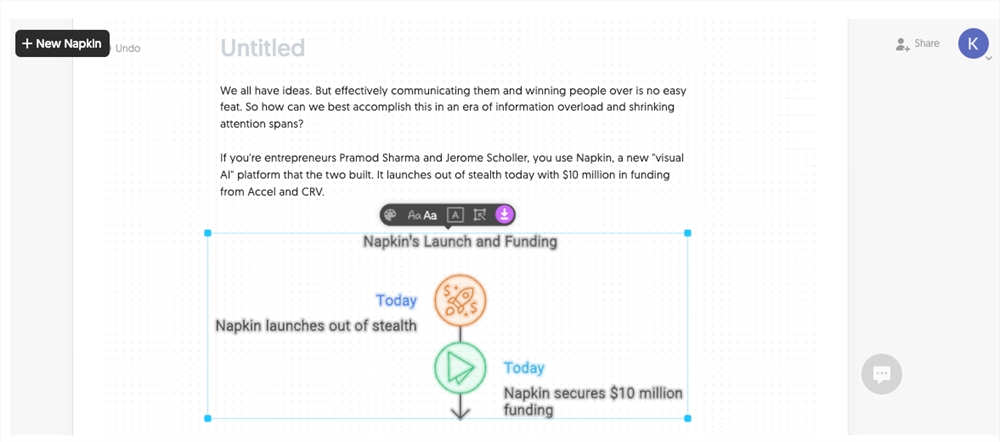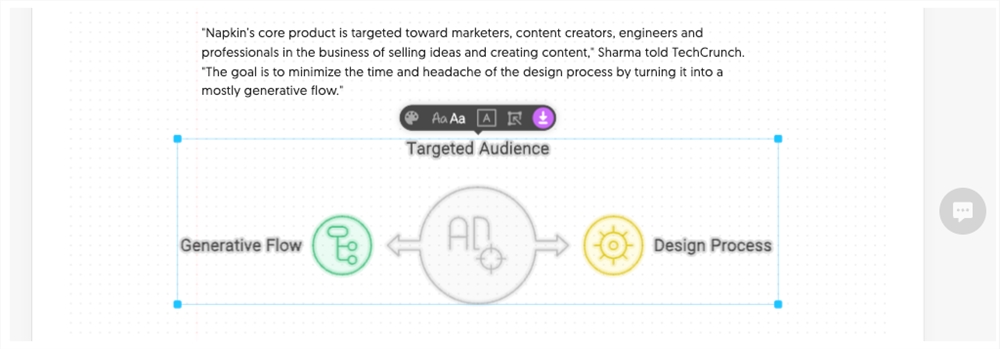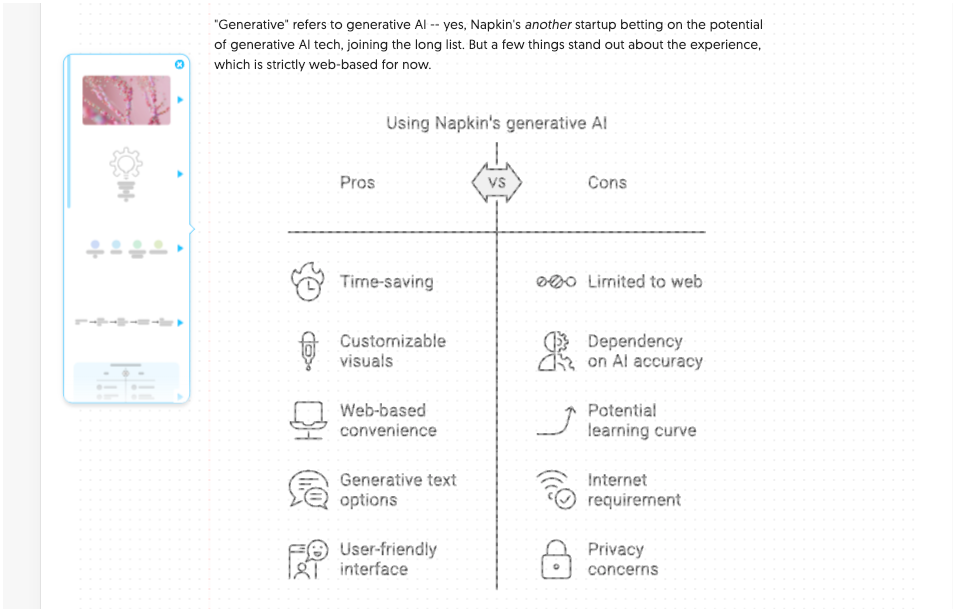Napkin, a visual AI platform founded by former Google employees, recently announced that it has received US$10 million in financing, led by Accel and CRV. Napkin aims to use generative AI technology to help marketers, content creators and other professionals quickly create visual content and improve communication efficiency. Its core product provides a canvas similar to Notion. Users can start from text or prompts to generate a variety of visual effects such as flowcharts and charts, and perform customized editing and sharing. Featuring generation-first design ideas, the platform strives to streamline the design process, saving time and effort.
Recently, Napkin, a visual AI platform co-founded by former Google employees Pramod Sharma and Jerome Scholler, announced that it has received US$10 million in financing led by Accel and CRV. The platform aims to provide users with tools to quickly create visual content through generative AI technology to achieve more effective expression and communication of ideas.
Napkin's core products are aimed at marketers, content creators, engineers and other professionals who need to perform creative sales and content creation. "The goal is to transform the design process into a primarily generative process, minimizing the time and hassle required to design," Sharma said.
Users can start with text or let Napkin generate text based on prompts, and the platform will then create a Notion-like canvas. By clicking on the spark icon after a text paragraph, the text will be transformed into a customizable visual, including flowcharts, graphics, infographics, and more. Users can further edit colors, fonts, and add decorative elements. The final result can be exported to various formats or shared as a URL.

What makes Napkin unique is its build-first experience. Sharma explains: Instead of tools that add a generation component to an existing editor, we focus on generation primarily, supplemented by editing capabilities.

However, preliminary trials indicate that Napkin still has some limitations when it comes to handling complex or ambiguous content. Sometimes visuals are generated that have no bearing on the original text, or information is made up out of thin air. In addition, its design style is relatively homogeneous, described by some early users as high school level.

Nonetheless, investors have high hopes for the Napkin team. Rich Wong of Accel said: Jerome and Pramod have an extraordinary ability to solve technical challenges and make it easy for users to get started. We are excited to support Napkin in bringing visual AI to the next chapter of business storytelling.
Sharma said that this round of financing will be used for product development and recruiting talents such as AI engineers and graphic designers. Currently, the Napkin team has 10 employees and plans to increase it to 15 by the end of the year.
As a fledgling startup, Napkin faces the challenge of further improving its products and improving the quality of its production. But with its unique positioning and experienced founding team, Napkin is expected to occupy a place in a business environment that increasingly values visual communication.
The future development of Napkin is worth looking forward to. Whether it can overcome existing challenges and eventually become a leader in the field of visual AI remains to be tested by time. However, its innovative model and strong team background undoubtedly provide a solid foundation for its development.